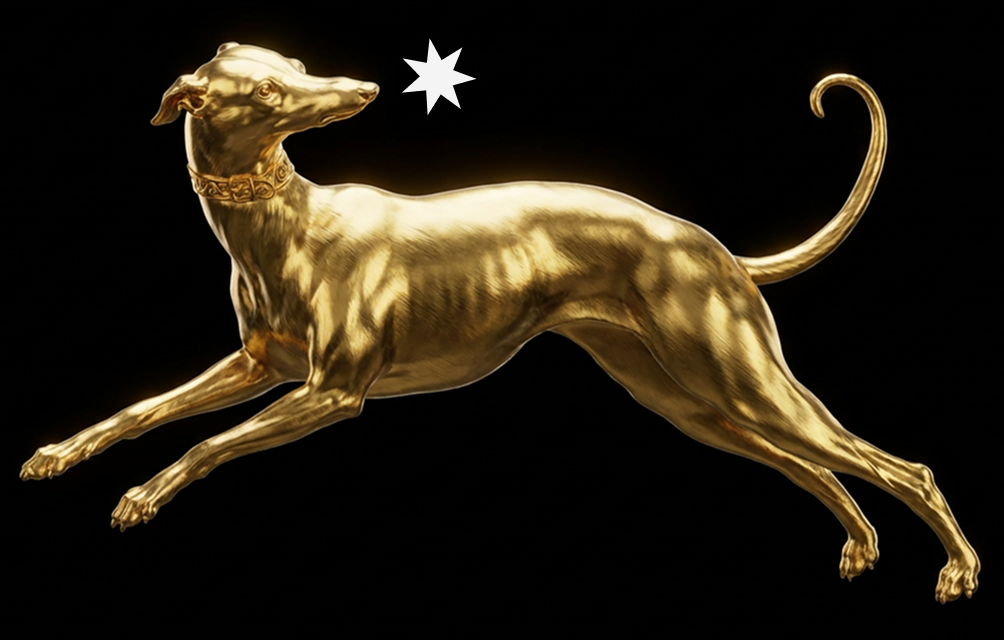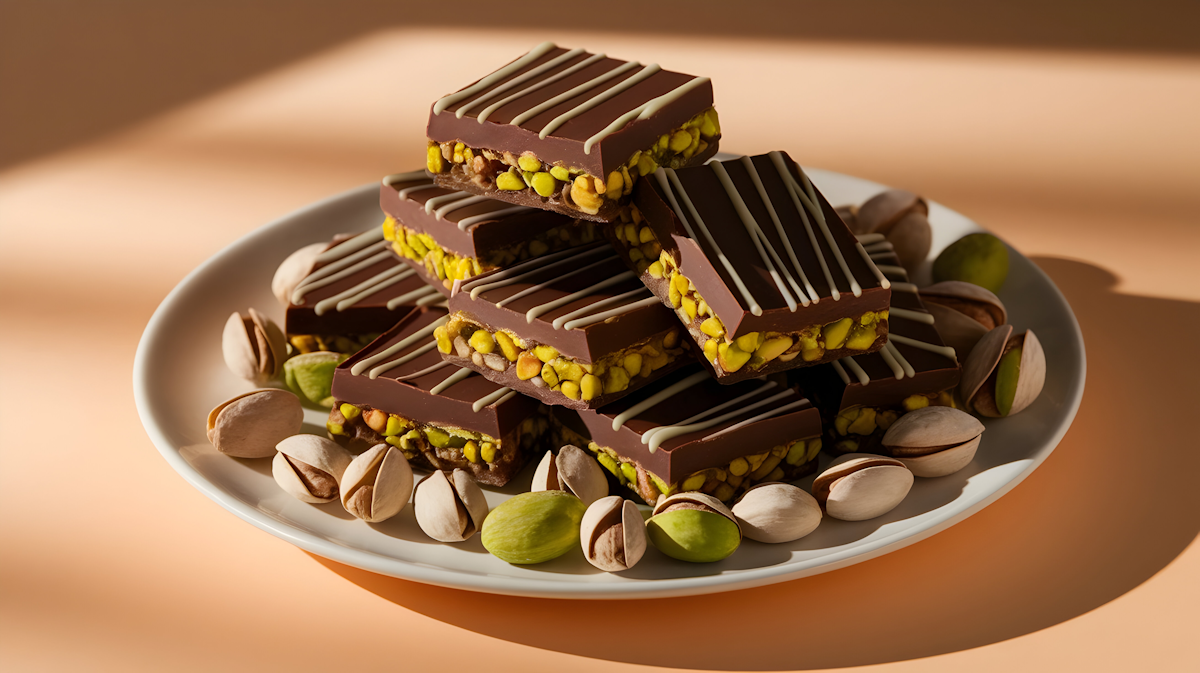Pistachio Craze Trend Analysis: From Dubai Chocolate to Global Markets
Get weekly strategy insights by our best humans

The pistachio craze of 2024–2025 stands out as far more than just a fleeting TikTok fad. While social media undeniably turbocharged its reach, deeper professional, cultural, and economic forces shaped why this little green nut became a global obsession—resonating well beyond the usual internet hype cycle.
In this blog, we’ll break down how a single viral dessert sparked worldwide demand, the psychology and social triggers fueling it, and why pistachio managed to sustain its momentum when so many trends fizzle out.
The Viral Spark: TikTok Trends and Dubai’s Pistachio Chocolate
The craze took off when Dubai’s FIX Dessert Chocolatier unveiled Can’t Get Knafeh of It—a pistachio cream–filled chocolate bar inspired by the Middle Eastern dessert knafeh. Made with milk chocolate, crunchy kataifi pastry, and pistachio-tahini paste, it sold for about £15 (≈$18) and often sold out of its 500 daily units.
In December 2023, TikTok creator Maria Vehera posted an ASMR-style video of the bar’s golden crunch and vivid green center. The clip hit 120 million views, and the so-called “Dubai chocolate” became a global aspirational object and a must-try—even though it was only sold in the UAE.
Copycat recipes, taste tests, and reaction videos flooded social media, while brands from Lindt to Häagen-Dazs, Waitrose, and Starbucks raced out pistachio-inspired products.
By early 2024, “Dubai chocolate” became a viral holy grail for dessert lovers, driving explosive global demand for anything pistachio. Within a year, pistachio prices jumped 34% to $10.30 per pound, supply chains strained, and some shops rationed stock.
Psychological and Social Triggers Behind the Pistachio Craze
What made millions of consumers around the globe rally around pistachios seemingly overnight? Professionals point to several interlocking motivations and triggers that gave this trend an unusually broad appeal:
- Aesthetic & Sensory Appeal: In the age of Instagram and TikTok, looks matter. Pistachios brought a distinctive, “Instagrammable” bright-green hue that pops on camera and connotes both natural goodness and luxury. That vivid green, often paired with gold or chocolate in desserts, signaled an indulgence that was as beautiful as it was delicious – a feast for the eyes and the palate. Social media rewards bold visuals, and pistachio’s color provided instant scroll-stopping power for Gen Z and millennial audiences. The Dubai bar’s presentation – hand-painted with edible gold and green splatters – exemplified this eye candy effect. Combined with the crunch factor (think ASMR satisfaction) and rich, creamy textures, pistachio treats offered a full sensory package that fueled virality.
- Exotic Nostalgia & Global Connection: Pistachio manages to feel exotic and comforting at the same time, bridging cultures. This nut has deep roots in Middle Eastern, South Asian, and Mediterranean cuisines. For consumers in Western markets, pistachio presented something novel and globally inspired, yet it wasn’t completely alien; many had tasted pistachio ice cream or pistachio macarons before. The craze tapped into a zeitgeist of post-pandemic wanderlust and cultural curiosity: people craving new flavors from afar and a sense of authentic tradition. Pistachio hit that sweet spot – it evoked nostalgic family memories for those from pistachio-loving cultures, while offering a fresh adventure for those new to it.
- Aspirational Luxury (without the Guilt): There’s an old-world luxury to pistachios – historically, they’ve been a pricier nut tied to royalty and festive occasions. The Dubai origin of the trend lent an extra aura of glamor and opulence (Dubai being synonymous with luxury). Consuming “Dubai chocolate” or a pistachio latte became an aspirational experience that everyday people could partake in. It was “luxury, but not unattainable” – a little premium treat for oneself. Marketers quickly leaned into elegant branding, from gold-accented packaging to upscale ads, positioning pistachio products as indulgences for the discerning sweet tooth. And yet, thanks to pistachio’s health halo (more on that next), consumers could rationalize these indulgences as mindful or “better” choices.
- Health Halo & “Mindful” Indulgence: Unlike many viral food fads, pistachios come with credible health benefits. They’re packed with protein, fiber, and antioxidants, and contain healthier fats. This created a “rationalized indulgence” effect – people felt less guilty treating themselves if pistachio was involved. So when the pistachio craze hit, health-conscious buyers could jump on it without feeling like they’d abandoned their principles.
In essence, the pistachio trend wasn’t propelled by hype alone – it resonated on a visual, cultural, and emotional level. The color and crunch made it fun and social media–friendly; the global flavors made it meaningful and novel; the luxury cues made it aspirational; and the health aspects made it permissibly indulgent. Few trends check so many boxes at once.
Why This Pistachio Trend Had Staying Power (When Most Fizzle Out)
Most internet food trends flare brightly and then burn out within weeks. Yet the pistachio obsession persisted through 2024 into 2025, evolving from a single TikTok dessert into a broad, lasting movement. Several factors gave the pistachio craze a foundation sturdy enough to outlast the usual hype cycle:
- Culinary Versatility: Pistachio isn’t a one-trick pony – its flavor works in sweet and savory, in beverages and baked goods, high-end patisserie, or everyday snacks. This remarkable versatility meant everyone could get on board in their own way. Bakeries and cafes embraced pistachio for pastries, cakes, macarons, and lattes, while gourmet restaurants experimented with pistachio pestos, pilafs, and crusted fish. Home cooks found pistachio butter and paste easy to incorporate into cookies, smoothies, or sauces. As a result, pistachio products proliferated across categories rather than remaining a niche item. This omnipresence kept consumers engaged – if they tired of one format (say, the chocolate bar), there was a new pistachio gelato or green latte to try next. The trend effectively refreshed itself through the sheer range of applications.
- Premiumization & Seasonal Appeal: The premium status of pistachios (one of the priciest nuts) actually played into its favor. At a time when consumers increasingly seek “premium” experiences in food, pistachios offered an easy upscale twist to familiar treats. Brands leveraged this by releasing limited-edition pistachio variants in elegant packaging and higher price points – and shoppers eagerly paid for the novelty (something similar happened with Labubus, we have an article about that) . Retailers reported strong margins on pistachio lines, and often timed them with seasonal boosts (holiday pistachio chocolates, summer pistachio ice cream re-releases). This premiumization cycle meant the trend wasn’t left to die out; it was continually re-packaged and re-launched to keep consumers excited. The aspirational luxury angle we discussed was thus reinforced at the point of sale.
- Sustainability & Supply Chain Stories: Unusually for a viral food fad, pistachios carried a sustainability narrative that resonated with eco-conscious consumers. Compared to notorious water-guzzlers like almonds, pistachios need significantly less water and are more drought-tolerant, making them a smarter choice in an era of climate concerns. For example, in California, pistachio orchards can survive on minimal water during droughts, whereas almond trees struggle. Food industry experts and even the media highlighted this fact, effectively politicizing the choice of nuts. Some socially aware consumers embraced pistachios as the “greener” indulgence, aligning their treat with their values.
In combination, these factors ensured that pistachio mania wasn’t just a brief sugar high. Its presence across diverse foods, alignment with premium and sustainable trends, and validation through market data all helped pistachios move from a viral moment to an ongoing movement in the food industry.
The Professional Take: Why Pistachios and Not Another Trend?
The pistachio trend flourished because it uniquely bridged experience, aspiration, and authenticity in ways that many superficial online fads fail to do. In retrospect, pistachios were the perfect product at the perfect time, hitting multiple consumer desires at once.
A luxurious yet wholesome ingredient was propelled by viral social media into the global spotlight, then sustained by consumer values and smart brand strategies. It wasn’t just about TikTok hype (though that spark was critical) – it was about a product that could live up to the hype by delivering on taste, appearance, cultural relevance, and even ethics. As a result, pistachios became an enduring phenomenon, achieving a “zeitgeist” status in food culture.
Want to get ahead of the next big shift?
- Apply for a Free Strategy Workshop (only four spots per month)
- Book a Brand Sprint to sharpen your positioning, or
- Take our SEO Health Quiz to see where you stand in AI search.

